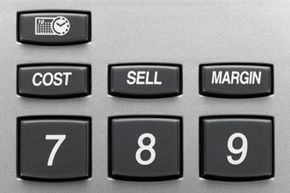You want to buy a few hundred shares of Google stock, but you don't have the money to buy them all -- and the price is rising every minute. If you've got your heart set on making that investment, though, you can open a margin account. Buying stock on margin is a way to purchase more stocks than you can currently afford. You're basically taking out a loan from your stock broker. If you have $5,000, you can get $10,000 in stock by borrowing the other $5,000 from the broker. If the stock increases in value, you can use the gains to pay off the loan and make a nice profit. If the stock drops in value, your loss will be compounded, since you'll still need to pay off the loan. You could even get hit with the dreaded margin call and have all your assets wiped out if you can't afford it. In case you were wondering, that's how the Duke Brothers went broke at the end of the movie "Trading Places."
In the late 1990s, buying stock on margin was a common strategy as investors sought to take advantage of the tremendous leaps in value some stocks were taking as part of the dot-com bubble. Investors who sold off their stocks and paid off their margin accounts before the bubble burst made a great deal of profit using margin. Those who didn't saw their assets disappear, or ended up owing money to their broker.
Advertisement
Margin buying is risky even when there's no bubble -- whenever the stock market is in decline, margin accounts can destroy assets. In 2008, the CEO of Oklahoma City-based Chesapeake Energy lost nearly $500 million when the company's stock declined and he was forced to meet a margin call [source: Zarroli].
Buying stocks on margin is a fairly advanced investing technique because it's more risky than simply buying stock with your own cash. It's also highly recommended that anyone planning to buy on margin have cash reserves ready for a margin call. Want to know why? This article will explain all the details of buying stock on margin, what a margin call is -- and why your broker might be able to "sell you out" with no warning.
Advertisement




